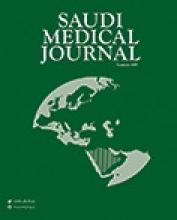Abstract
OBJECTIVE: To elucidate the effects of human keratinocyte-derived HaCaT cells (HIV-TAT) protein transduction domains (PTD) coupled heme oxygenase-1 (HO-1) fusion protein (TAT-HO-1) on radiation-induced human keratinocyte-derived HaCaT cells.
METHODS: This study was conducted between May 2010 and February 2013 in the School of Radiation Medicine and Protection, Soochow University, Suzhou, China. This experimental study was designed to explore the protective role of TAT-HO-1 in skin cells. The human HO-1 gene was fused with a gene fragment encoding TAT PTD to produce in-frame TAT-HO-1. The distribution of TAT-HO-1 was measured by immunostaining and Western blot. The radioprotection for TAT-HO-1 was determined using clonogenic assay. Alterations in apoptosis were analyzed by flow cytometry.
RESULTS: The expressed and purified TAT-HO-1 recombinant protein could be incorporated into human HaCaT cells. We then evaluated the protective role of TAT-HO-1 against ionizing radiation. The TAT-HO-1 attenuated the generation of reactive oxygen species and decreased HaCaT cell radiosensitivity to irradiation. Moreover, HaCaT cells pretreated with TAT-HO-1 resulted in less apoptosis by radiation. In addition, TAT-HO-1 could penetrate rat skin.
CONCLUSION: These results suggest that TAT-HO-1 can protect HaCaT cells from ionizing radiation.
- Copyright: © Saudi Medical Journal
This is an open-access article distributed under the terms of the Creative Commons Attribution-Noncommercial-Share Alike 3.0 Unported, which permits unrestricted use, distribution, and reproduction in any medium, provided the original work is properly cited.






